Volume 36, Issue 1
Displaying 1-16 of 16 articles from this issue
- |<
- <
- 1
- >
- >|
Special Editions
-
2021Volume 36Issue 1 Pages 1-2
Published: February 28, 2021
Released on J-STAGE: February 26, 2021
Download PDF (143K) -
2021Volume 36Issue 1 Pages 3-11
Published: February 28, 2021
Released on J-STAGE: February 26, 2021
Download PDF (467K) -
2021Volume 36Issue 1 Pages 12-19
Published: February 28, 2021
Released on J-STAGE: February 26, 2021
Download PDF (240K) -
2021Volume 36Issue 1 Pages 20-28
Published: February 28, 2021
Released on J-STAGE: February 26, 2021
Download PDF (358K) -
2021Volume 36Issue 1 Pages 29-35
Published: February 28, 2021
Released on J-STAGE: February 26, 2021
Download PDF (282K) -
2021Volume 36Issue 1 Pages 36-41
Published: February 28, 2021
Released on J-STAGE: February 26, 2021
Download PDF (233K) -
2021Volume 36Issue 1 Pages 42-48
Published: February 28, 2021
Released on J-STAGE: February 26, 2021
Download PDF (243K) -
2021Volume 36Issue 1 Pages 49-56
Published: February 28, 2021
Released on J-STAGE: February 26, 2021
Download PDF (724K) -
2021Volume 36Issue 1 Pages 57-63
Published: February 28, 2021
Released on J-STAGE: February 26, 2021
Download PDF (352K) -
2021Volume 36Issue 1 Pages 64-72
Published: February 28, 2021
Released on J-STAGE: February 26, 2021
Download PDF (272K) -
2021Volume 36Issue 1 Pages 73-81
Published: February 28, 2021
Released on J-STAGE: February 26, 2021
Download PDF (426K)
Review
-
2021Volume 36Issue 1 Pages 82-88
Published: February 28, 2021
Released on J-STAGE: February 26, 2021
Download PDF (270K)
Original Article
-
2021Volume 36Issue 1 Pages 89-96
Published: February 28, 2021
Released on J-STAGE: February 26, 2021
Download PDF (396K)
Case Reports
-
2021Volume 36Issue 1 Pages 97-103
Published: February 28, 2021
Released on J-STAGE: February 26, 2021
Download PDF (1027K) -
2021Volume 36Issue 1 Pages 104-111
Published: February 28, 2021
Released on J-STAGE: February 26, 2021
Download PDF (1230K) -
2021Volume 36Issue 1 Pages 112-118
Published: February 28, 2021
Released on J-STAGE: February 26, 2021
Download PDF (821K)
- |<
- <
- 1
- >
- >|
